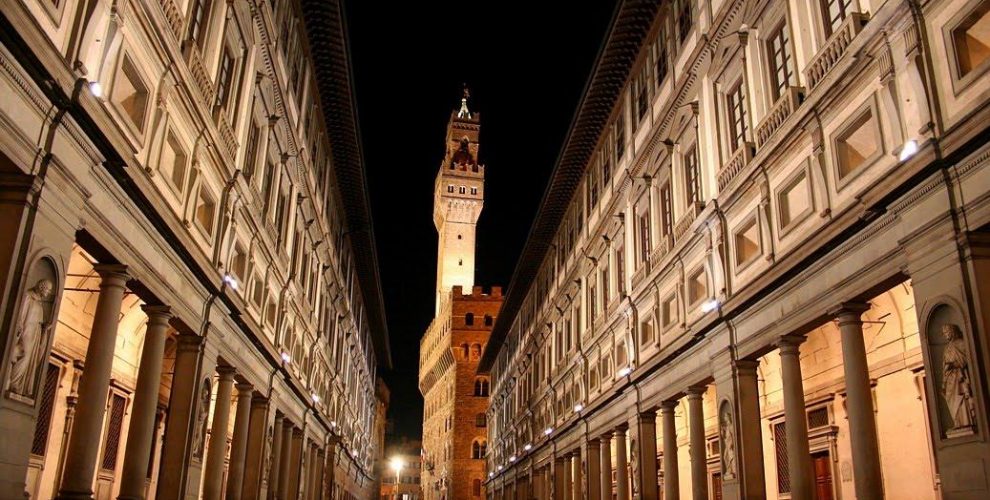The Uffizi gallery was built in 1581, under the request of Granduca Francisco de’ Medici, son of Cosimo I. The original design was that of Giorgio Vasari, one of the leading painters and architects during the 15th century. His plan for this museum was quite a strategically planned building as it was constructed adjacent to the Medici Palace and extended until the Arno river, over the Ponte Vecchio bridge. The space was originally intended for offices and to host bureaucratic meetings for various magistrates as apposed to holding masterpieces as it is today. It was built rapidly despite minor difficulties and major social events taking place in the area (ie: the marriage of Francisco and the Giovanna of Austria).
In 1584, the magnificent Octagonal Platform (or ‘Tribuna Ottagonale’) was built by Vasari’s successor Buontalenti. This special cosmological structure consists of a weathercock which connects to an inside pointer alluding to the Air element. The sky vault and red upholstery allude to the Water and Fire elements respectively. There is an extraordinary octagonal table preserved since since 1589 which sits in the middle of the room.
In it knows them adjacent to this a time conserved scientific instruments, the Armory found place, and to the term of the first corridor Cabinet of the miniature- was the “Cabinet of the Madame” – today where the Granduchessa conserved its joys and small art objects.
These as soon as described they were know them them museali more ancient and several in the content.
From the other side of the building they were found instead the laboratories of smaller limbs, the Foundry (or pharmacy), where medicines, scents were distilled and sometimes poisons, while to the term of the corridor, over the Loggia of the Lanzi it had been created a hanging garden.
The extraordinary wealth that the Gallery had its origins since carried the enjoyment of the art, than in the city of Florence always it had been of public domain, to a private dimension, or at least to one much narrow one, and that was justified from the Doctors like one necessity dictated from the will of conservation of the works.







2 Comments
autism symptoms
Thanks for some quality points there. I am kind of new to online , so I printed this off to put in my file, any better way to go about keeping track of it then printing?
classic mini ugg bottes
Hi, i think that i saw you visited my website thus i came to “return the favor”.I am trying to find things to enhance my website!I suppose its ok to use some of your ideas!!